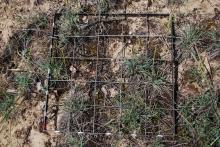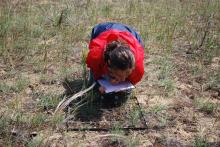Our aim is to synthetize the existing knowledge of open sandy grasslands using the ecological and ecophysiological informations on community and population level together with new methods for studying vegetation patterns and simulation models, in order to interpret community patterns and function together.
Studies were conducted along a semiaridity gradient of forest-steppe grassland patches near Gönyű, Csévharaszt and Fülöpháza. The experimental design using space-time substitutions allowed us to form hypotheses on the predicted effects of climate change based on the trends detected along the climatic gradient.
The aim of our study is to collect data on the temporal variabilty of the spatial assembly of open sandy grasslands, changes in species and vegetation patches and the effects of spatiotemporal neighbourhood effects on the diversity and dynamics of the community.
We have used three sampling types:
- recording the species covers in 40 permanent quadrats of 2 x 2 m regularly arranged (4 x 10) within a 40 x 100 m site (since 2006, once a year)
- habitat mapping from the same 40 x 100 m site in 5 x 5 m resolution, detecting the dominance types of the vegetation (since 2006, once a year in June)
- microcoenological sampling for detecting the presence of species in 5 x 5 cm microquadrats along a 52 m long circular transsect. There are two permanent transsects sampled once a year, in May, since 2004.


